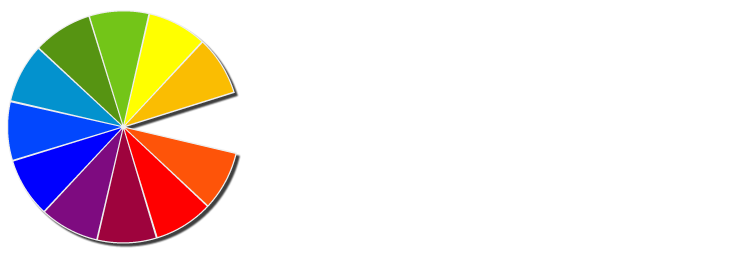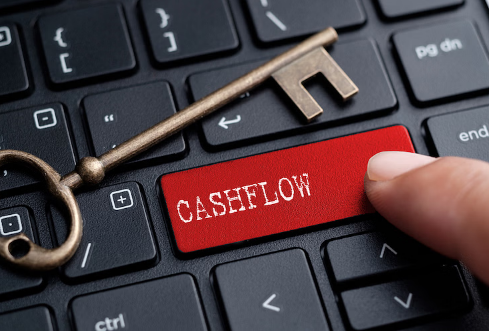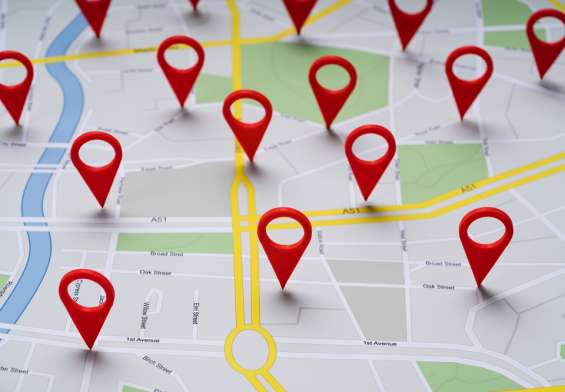ROI is especially important in digital local marketing. Accurately measuring ROI helps you decide where your dollars work hardest. By focusing on local digital marketing strategies, small businesses can compete with national brands and still prove results.
When businesses invest in digital marketing, the first question they ask is simple: What am I getting back for what I spend? That’s where ROI, or Return on Investment, comes into play. It’s the metric that shows whether your campaigns are driving real profit or just clicks.
This guide explains digital marketing ROI in plain language, walks through the formula, shares examples, and explores why it matters more than ever. By the end, you’ll know how to measure ROI and use it to grow your business with confidence.
What Does ROI Mean in Digital Local Marketing?
ROI in digital marketing is a very simple, yet important metric. It’s a measurement of how profitable your marketing efforts are compared to the money you spend. It answers the question: Did this campaign bring in more revenue than it cost?
The formula is straightforward:
ROI=(Revenue–Marketing??Costs)Marketing??Costs×100ROI = \frac{(Revenue – Marketing\; Costs)}{Marketing\; Costs} \times 100ROI=MarketingCosts(Revenue–MarketingCosts)?×100
Let’s say you spent $1,000 on ads that generate $2,500 in revenue. Your ROI is 150%. That means you gained $1.50 for every $1 invested. ROI can also be expressed as a ratio, like 5:1, meaning you earned $5 for each $1 spent.
In digital local marketing, ROI shows whether your strategies are driving fluff metrics or tangible results. To dive deeper into why proving value matters, check out Proving the Value of Digital Marketing in 2024.
Why ROI Matters for Digital Marketing Success
ROI matters is the connective tissue between marketing and business results. It’s what business owners use to justify their investment and make smarter decisions.
- Justifies spending: ROI proves campaigns are generating real revenue.
- Optimizes budgets: By showing which strategies perform best, ROI guides where to allocate dollars.
- Improves strategies: Analysis highlights what’s working and what needs fixing.
- Creates accountability: ROI holds marketing teams responsible for outcomes.
For small businesses, ROI is the proof that digital marketing for local businesses can compete with larger brands and bring measurable results. It also shows decision makers where their money is going; reassuring them it’s not being sucked into a black hole of vague “awareness campaigns.”
Consider an NJ retailer. If email marketing shows a 400% ROI but social ads return only 50%, there’s a clear decision to be made. The retailer can double down on email and reduce social spend, squeezing more profit out of the same budget.
How to Calculate ROI in Digital Local Marketing Campaigns
Measuring ROI requires tracking both costs and revenue. Here’s a step-by-step breakdown:
- Add up total marketing costs
- Ad spend (Google Ads, Facebook Ads, etc.)
- Content creation (blogs, videos, graphics)
- Software or tools (analytics, automation platforms)
- Personnel time and agency fees
- Calculate revenue generated by the campaign
- Direct sales revenue from ads or SEO leads
- Lead conversions tied to campaign activity
- New customers with measurable value
- Apply the ROI formula
ROI=(Revenue–Marketing??Costs)Marketing??Costs×100ROI = \frac{(Revenue – Marketing\; Costs)}{Marketing\; Costs} \times 100
Example 1:
- Campaign cost = $1,000
- Revenue = $2,500
- ROI = (($2,500 – $1,000) ÷ $1,000) × 100 = 150%
Example 2 (detailed):
- Costs: $2,000 ad spend, $500 content, $500 software = $3,000 total
- Revenue: $9,000 from campaign-related sales
- ROI = (($9,000 – $3,000) ÷ $3,000) × 100 = 200%
This shows the campaign tripled its investment, a strong return. For ecommerce examples, see How to Measure the ROI of Your Ecommerce Marketing Campaigns.
Common ROI Mistakes That Cost Local Businesses Money
- Forgetting hidden costs: Excluding staff time or software fees skews results.
- Double-counting revenue: Attributing one sale to many campaigns inflates ROI.
- Focusing only on short-term sales: Some channels, like SEO, pay off months later.
- Not separating campaigns: Lumping SEO, PPC, and email together muddies results.
NJ businesses making these mistakes won’t have accurate ROI calculations, and without those, they can’t compare strategies fairly.
Best Tools to Measure ROI in Digital Marketing
To measure ROI accurately, you need data. These tools make tracking easier:
- Google Analytics 4 (GA4): Measures conversions and revenue from digital campaigns.
- HubSpot or Salesforce: Tracks customer journeys from lead to closed sale.
- Call Tracking Software: Connects phone inquiries back to marketing campaigns.
- Local SEO platforms: Show which keywords and listings drive calls and visits.
Using these tools, a local dentist could see that half their new patient calls came from Google Maps listings. That insight proves their ROI in local online marketing is paying off, even if ads drive fewer appointments.
What Counts as a Good ROI in Digital Local Marketing?
A “good” ROI depends on industry, goals, and competition. In general, a 5:1 ratio (500%) is considered excellent, meaning $5 returned for every $1 spent.
But, every industry is different and has different benchmarks. Ecommerce may have lower margins. Meanwhile, contractors often see higher returns on fewer leads.
Here’s a breakdown by sector:
| Industry | Typical “Good” ROI | Notes |
| Legal (NJ law firms) | 4:1 – 6:1 | High-value leads, longer sales cycles |
| Retail & Ecommerce | 2:1 – 4:1 | Lower margins, quicker turnover |
| Healthcare/Medical | 3:1 – 5:1 | Strong demand, compliance-heavy |
| Contractors/Home Services | 5:1+ | High-ticket jobs, seasonal demand |
Benchmarks are useful signposts, but you should measure ROI against your own business goals and industry standards.
Campaign type also influences ROI. SEO tends to produce higher long-term ROI, while PPC may show faster but sometimes lower ratios. Email marketing often has the highest ROI because costs are low once a list is built.
For NJ businesses, seasonality matters too. A landscaper may see better ROI in spring and summer, while a heating contractor peaks in fall and winter. ROI isn’t static—it shifts with customer demand and NJ digital marketing campaigns must account for that.
Digital Local Marketing ROI: Real NJ Business Examples
SEO Example
A local plumber invests $2,000 in SEO to improve rankings for “emergency plumber near me.” Within three months, they book $12,000 worth of new jobs. The ROI is 500%, proving SEO delivers long-term value.
PPC Example
A NJ law firm spends $1,500 on Google Ads targeting “personal injury lawyer.” They sign a new client worth $7,500. That’s a 400% ROI, showing PPC can pay off even with higher upfront costs. For more on balancing paid and organic, see SEO & PPC Harmony: A Guide to Boosting Your ROI.
Social Media Example
A restaurant runs a $500 Facebook campaign to promote a weekend special. The campaign drives $2,000 in reservations. ROI: 300%. For local businesses, social campaigns like this can create quick wins.
Email Example
A boutique in Morristown spends $200 on an email campaign promoting a seasonal sale. The campaign generates $3,000 in revenue from loyal customers. That’s a staggering 1,400% ROI, highlighting why email remains a powerful channel.
Seeing ROI calculations in action like this proves digital local marketing generates real returns.
The Biggest Challenges in Tracking Digital Marketing ROI
While ROI is vital, it’s not always simple to measure. Many businesses run into the following challenges:
- Attribution issues: Customers may see many campaigns before converting, making it hard to credit the right one.
- Long-term value: ROI may miss future revenue from repeat customers.
- Non-sales goals: Campaigns focused on brand awareness or engagement don’t show direct revenue.
- Hidden costs: Overhead like software subscriptions and staff time often get overlooked.
Attribution is one of the trickiest problems. Do you credit the first ad someone clicked, the last one, or every touchpoint between? Models like first-click, last-click, or multi-touch attribution all tell different stories. That can make it difficult to pinpoint numbers needed for an ROI calculation.
Local businesses also face challenges with offline conversions. A customer may see an ad online but call or visit in person. Without proper tracking, that revenue may never get linked back to the digital campaign that caused it. Strong local SEO and digital marketing ROI tracking tools can close this gap.
Beyond ROI: Key Marketing Metrics Every Business Should Track
ROI is powerful, but it’s not the only metric worth tracking. To fully understand performance, consider these extra measurements:
- ROAS (Return on Ad Spend): Focuses specifically on advertising efficiency.
- Customer Lifetime Value (CLV): Calculates the long-term worth of each customer.
- Lead Quality Metrics: Tracks whether leads are valuable, not just plentiful.
- Engagement Metrics: Social shares, click-through rates, and email open rates provide insight into awareness and interest.
For example, a chiropractor in Essex County might see a modest ROI from a Facebook ad. But when considering CLV, those new patients may return for many visits. If that’s the case, their profitability is stretching far beyond that initial campaign. This shows how digital marketing results for small businesses extend beyond immediate revenue.
ROI Takeaways for NJ Businesses Competing Online
- ROI is the most important measure of profitability in digital local marketing.
- The formula is simple, but accurate measurement requires tracking all costs and revenue sources.
- A “good” ROI varies by industry, but aiming for at least 3:1 ensures campaigns are worth the investment.
- Real-world examples show how SEO, PPC, social, and email campaigns can drive returns for NJ businesses.
- While ROI is essential, pairing it with metrics like CLV and ROAS gives a fuller view of performance.
If you’re working with an outside partner, make sure you know what to look for. Here’s a guide on How to Spot a Bad SEO Agency in NJ and another on How to Tell if Your NJ SEO Company Is Helping You Rank.
Start Measuring ROI in Your Digital Local Marketing Today
Understanding ROI in digital marketing helps businesses invest wisely, measure success, and hold campaigns accountable. For NJ companies in competitive industries, ROI is about survival and growth.
The sooner you begin tracking ROI, the sooner you’ll know which channels truly drive profit. With accurate data, you can cut waste, strengthen high-performing campaigns, and build a marketing strategy rooted in results.
If you’re ready to get more from your digital local marketing, start by tracking ROI today. The right strategy, backed by real data, can turn every dollar into measurable results and make measuring ROI in community-based marketing second nature.





